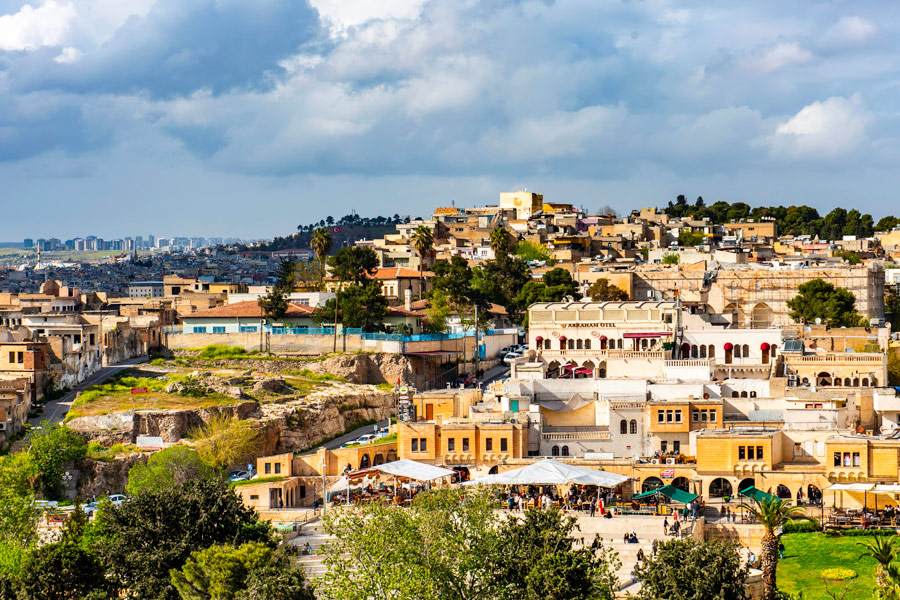
The top things to do in Şanlıurfa reveal a sacred and soulful Mesopotamian Silk Road city in Türkiye. Just a short flight from Istanbul, this is the “City of Prophets,” revered as the birthplace of Abraham. That is why Urfa is a profound pilgrimage site for Judaism, Christianity, and Islam.
The Sıra Gecesi gathering and ancient Dengbejlink storytelling earned its status at the UNESCO City of Music. Even more, Şanlıurfa is a nominee for the UNESCO City of Gastronomy, celebrated for its çiğ köfte, lahmacun, and eggplant kebab. It is poised to join Gaziantep, Hatay, and Afyonkarahisar on Turkey’s culinary map.
Bordering northern Syria, Şanlıurfa hums with life in its bustling bazaars, where locals speak Turkish, Kurdish, and Arabic.
21 Incredible Places to Visit in Şanlıurfa
Şanlıurfa has everything. These are historical sites of Balıklıgöl and Göbekli Tepe, and fascinating museums such as the Archaeology and Mosaic Museums. Religious tours in Şanlıurfa start at the Mevlid-i Halilulrahman Cave and Ulu Mosque, sacred to three monotheistic religions. On the other hand, a day trip to Harran takes travellers to the land of Abraham’s journey. Furthermore, food lovers can savour the city’s culinary specialities – ciğer kebabı (liver kebab) and tirit (boiled meat with thin flat bread). The Şanlıurfa top experiences unite faith, flavour, culture, and history in one unforgettable adventure.
Göbekli Tepe
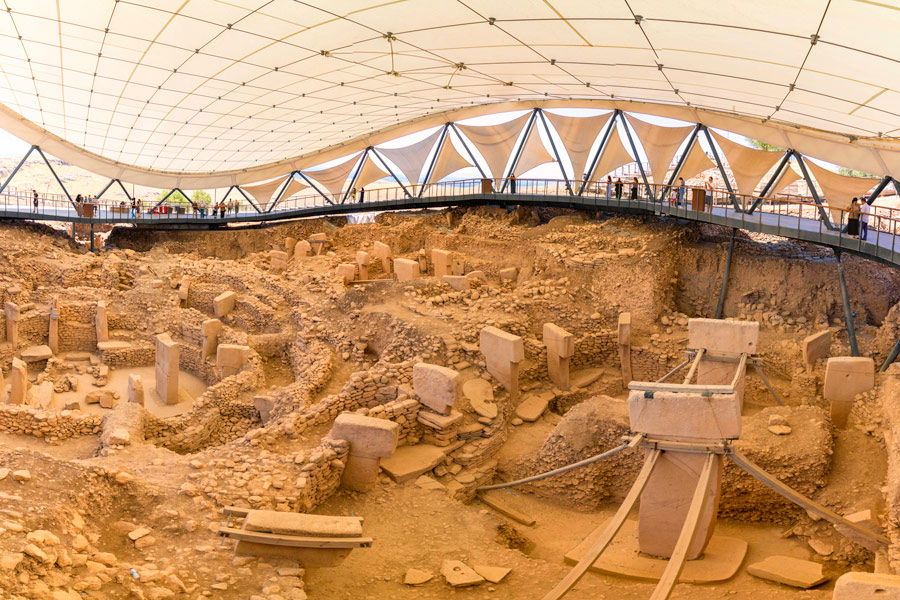
Visit the World’s Oldest Temple and a UNESCO Treasure
If you are collecting the visits to the world’s oldest temples, welcome to Göbekli Tepe (Potbelly Hill), a Turkish UNESCO World Heritage Site. Built on a hill around the 10th millennium BC, its massive stone pillars depict animal carvings. But the site still hides many ancient secrets. The proof is a recent find – a human-sized statue unearthed in September 2025.
The year 2025 was also important for this Neolithic site because it marked thirty years of ongoing excavations that started in 1995 by the German archaeologist Klaus Schmidt. Göbekli Tepe is necessary when you travel in Southeastern Türkiye. There are guided tours and day trips from Şanlıurfa.
How to Get to Göbekli Tepe from Şanlıurfa?
Göbekli Tepe is a 25–30-minute drive from the city centre. Shuttle buses, taxis, and organised Şanlıurfa tours run regularly. However, guided excursions are most convenient. The site is open daily, with longer hours in summer. Travellers should allow at least two hours at the site.
Balıklıgöl (Halil-Ür Rahman Lake)
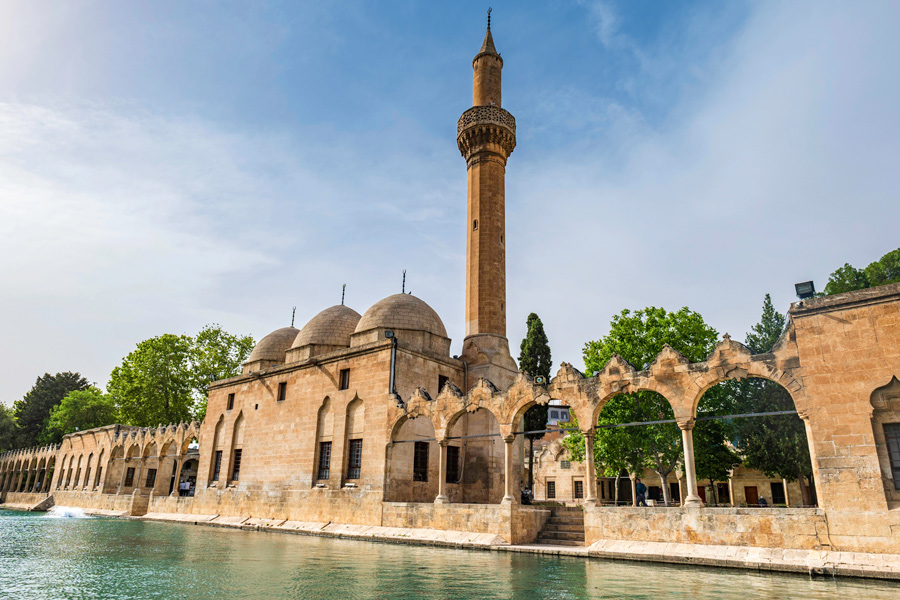
Discover the Sacred Pool Surrounded by Many Legends
Balıklıgöl is in the heart of Şanlıurfa. Also known as the Pool of Sacred Fish, it is linked to the Prophet of Abraham (Halil-Ür Rahman Lake). The tradition says the place is where King Nimrod tried to burn Abraham for spreading the belief in One God, but flames turned into water and wood into fish. Many believe Abraham was born in a cave (Mevlid-i Halilulrahman Mağarası) above Balıklıgöl within the Dergah Mosque complex (Dergah Cami).
This serene spot is one of the most visited Şanlıurfa attractions. Golden carp glide through the water. It is a peaceful experience when the pool and surrounding courtyards are beautifully lit.
What to Do in Şanlıurfa in the Evening?
Balıklıgöl is best experienced at sunset. When locals gather, lights reflect on the water, and the atmosphere enchants. Cafés nearby serve tea with a pool view, making it a favourite evening activity in Şanlıurfa.
Ayn-ı Zeliha Lake
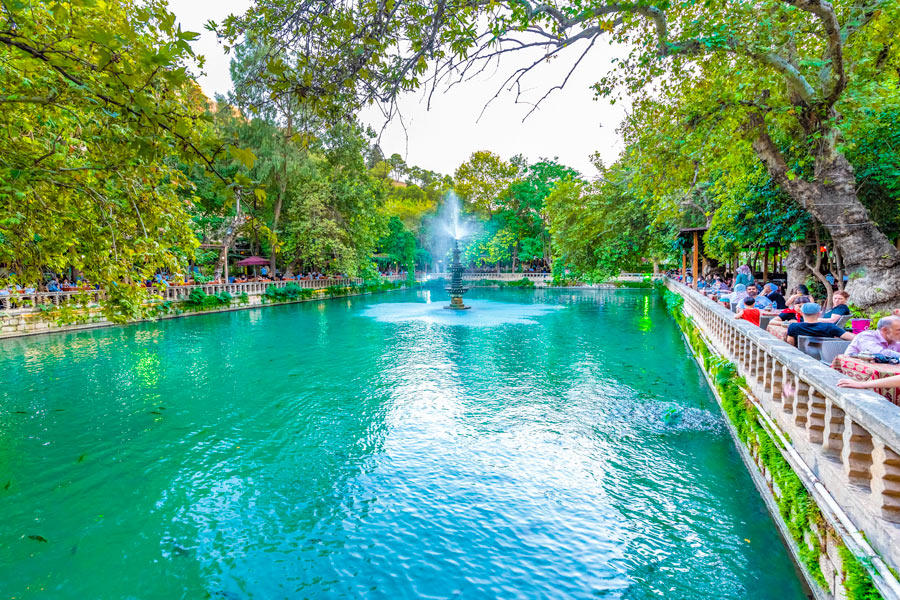
See the Lake Born from Zeliha’s Tears
Ayn-ı Zeliha Lake (Ayn Zeliha Gölü) is close to Balıklıgöl. According to myth, King Nimrod’s daughter, Zeliha, threw herself into the fire after seeing Abraham cast into fiery flames for his faith. The miracle happened, and the fire transformed into a lake. The Arabic meaning of “Aynzilha” translates as “the tears of Zuleyha.”
Şanlıurfa Castle
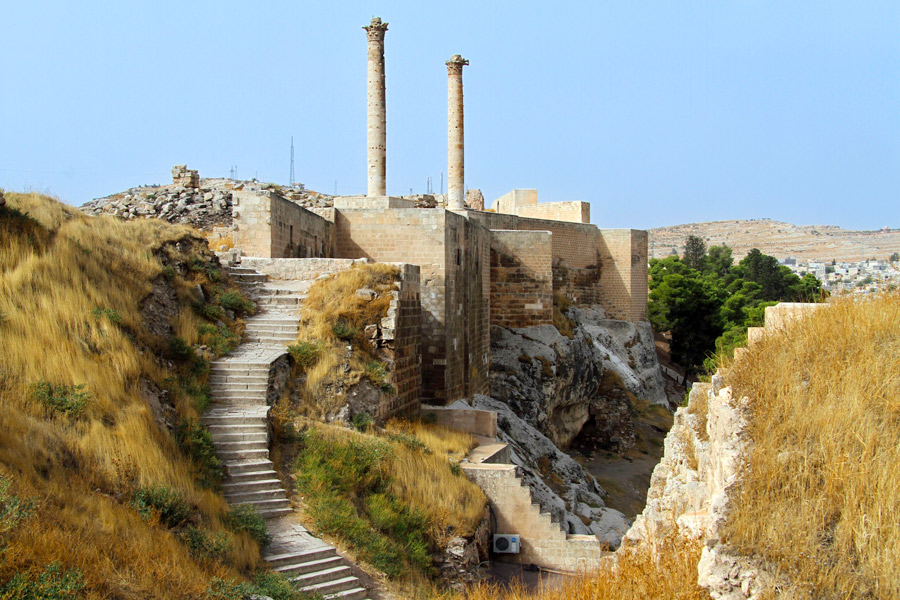
Climb for Panoramic Vistas and a Glimpse into Ancient Mysteries
Şanlıurfa Castle (Şanlıurfa Kalesi) crowns the skyline and stands as a highlight of Şanlıurfa sightseeing. Two tall columns from the 3rd century still dominate the skyline. Recent excavations revealed a rock-cut tomb, possibly from the Abgar dynasty of the Osroene kingdom. The kingdom, with the capital of Edessa (current Şanlıurfa), is known to be the first to adopt Christianity. Apocryphal texts mention King Abgar and his correspondence with Jesus. The Kingdom of Osroene was important in establishing Syriac Christianity in the region.
Where to Find the Best Photography Spots in Şanlıurfa?
Urfa Castle is ideal for capturing exceptional shots of the city. Other favourite photography spots include the mud houses of Harran and the wonderful waterside vistas of a Halfeti boat tour.
Haleplibahçe Mosaic Museum
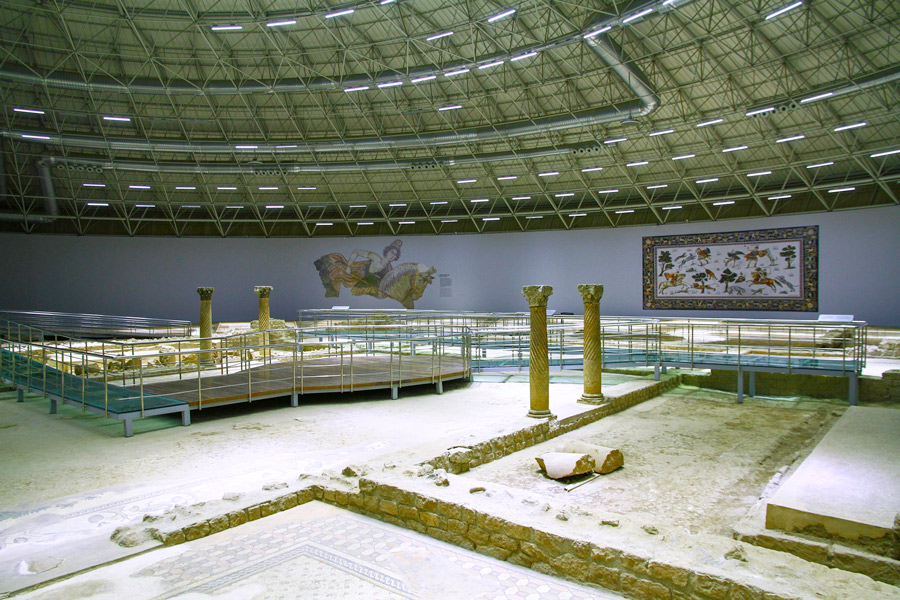
Admire Roman Artistry and Mythological Mosaics
The building south of the Şanlıurfa Archaeology Museum is the Haleplibahçe Mosaic Museum (Haleplibahçe Mozaik Müzesi). Thanks to its remarkable artisanry, history and art enthusiasts should add this museum to their list of top things to do in Şanlıurfa.
It was built on the site of a former Roman villa unearthed during construction works. The villa’s intricate floor mosaics depict scenes from Greek mythology. These are Ktisis, the protecting goddess of the Villa of Amazons, and episodes from Achilles' life, which date back to the second century AD.
Kızılkoyun Necropolis
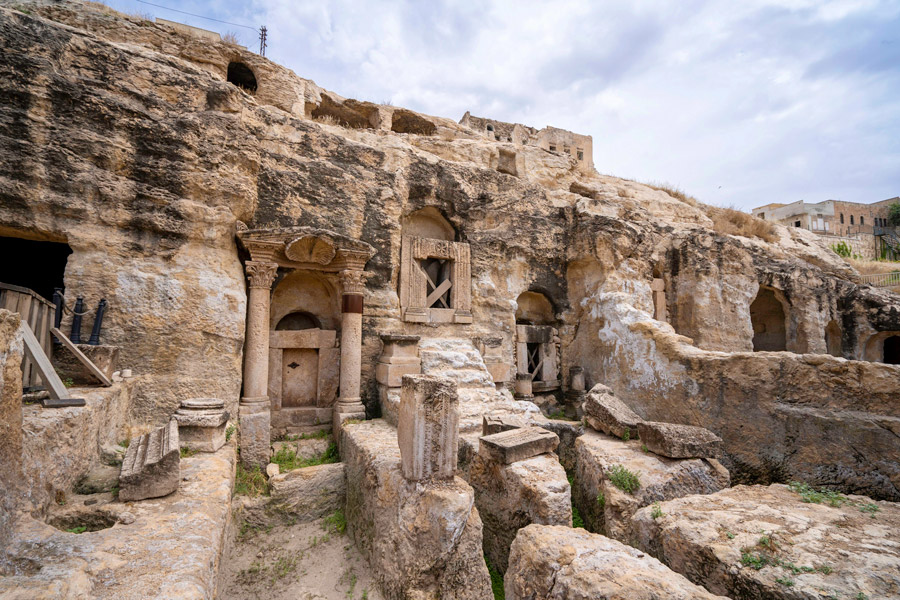
Walk the Ancient Rock Tombs of Şanlıurfa
Kızılkoyun Necropolis (Kızılkoyun Nekropolü) is among the lesser-known and yet striking Sanliurfa sights. Lying on the eastern side of the Şanlıurfa Archaeology Museum, it represents a series of rock-cut tombs dating to the 3rd–4th centuries AD. Once part of the Roman settlement, these chambers were carved into the cliffs and decorated with reliefs.
Pro Tip: Now open to visitors, the site is listed on Google Maps as Kızılkoyun Roma Mezarları (Kızılkoyun Roman Tombs).
Şanlıurfa Historic Bazaar
Follow the Scent of Spices into the City’s Beating Heart
Somewhere between browsing the best places to see in Şanlıurfa, your stomach will remind you it is time for lunch. And every local guide will point you toward the historic covered bazaar. Here, you can lose yourself amid stalls and alleyways with textiles, copperware, and jewellery.
Pro Tip: Searching Google Maps for “Covered bazaar” (or “bedesten”) will yield confusing results. Instead, head to Gümrük Hanı (Gümrük Inn). The roofed market was built in 1562 near this inn, expanding into a maze of corridors linked with the Coppersmiths’ Bazaar (Bakırcılar Çarşısı), Jewellers’ Bazaar (Kuyumcular Çarşısı), and Catın Ticaret.
What are Free Things to Do in Şanlıurfa?
Walking through Şanlıurfa bazaars costs nothing yet reveals everything – the city’s craftmanship, the aroma of mırra coffee, authentic to Şanlıurfa, and the rhyme of daily life echoing centuries-old arcades.
Kitchen Museum
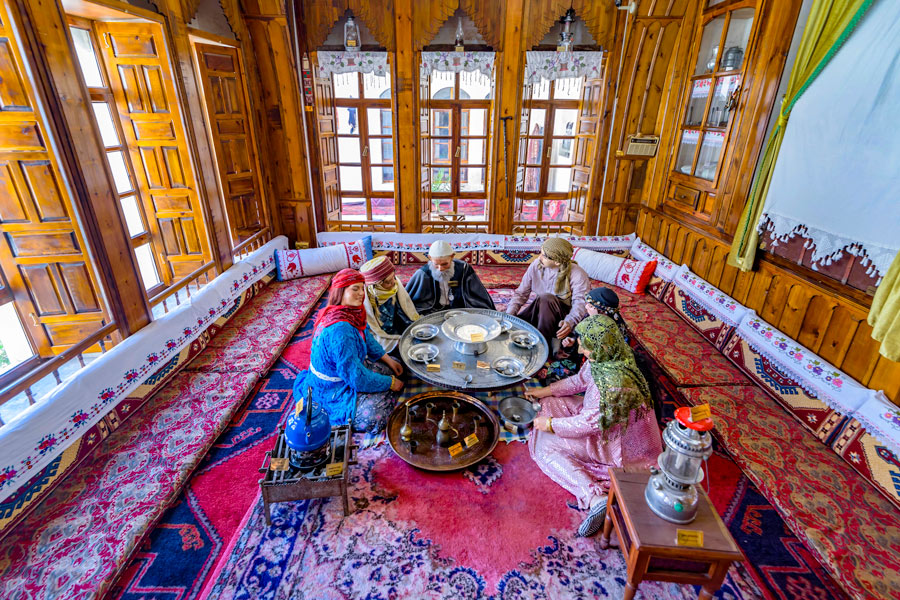
Explore the Food Culture of Şanlıurfa
Staying in a new town in Türkiye is always about unique experiences. And Şanlıurfa cultural tours offer encounters with local hospitality, which is unimaginable without Urfa cuisine. When you step into the Kitchen Museum (Mutfak Muzesi) in the historic Hacıbanlar house, you see the wax figures of women cooking in the traditional setting of the Ottoman period. You learn about local dishes that made it to our days, such as çiğ köfte, kazan kebab, lahmacun, kalbur tatlısı, and others.
Fırfırlı Mosque
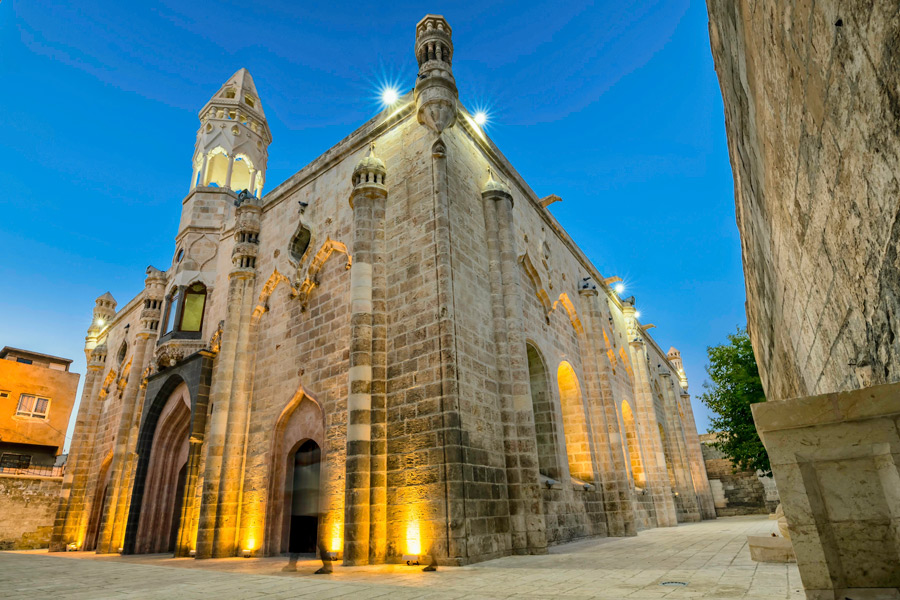
Admire the Armenian Stonework Behind the Sacred Transformation
Those interested in Şanlıurfa religious tourism will appreciate touring mosques in Türkiye. The Fırfırlı Mosque (Fırfırlı Cami) was erected in 1956 on the grounds of the Armenian Protestant Church of the Twelve Apostles. The stone workmanship is beautiful. Two small, house-like chambers project from the base of the façade. These are remnants of the churches’ original Armenian design.
Selahaddin Eyyubi Mosque
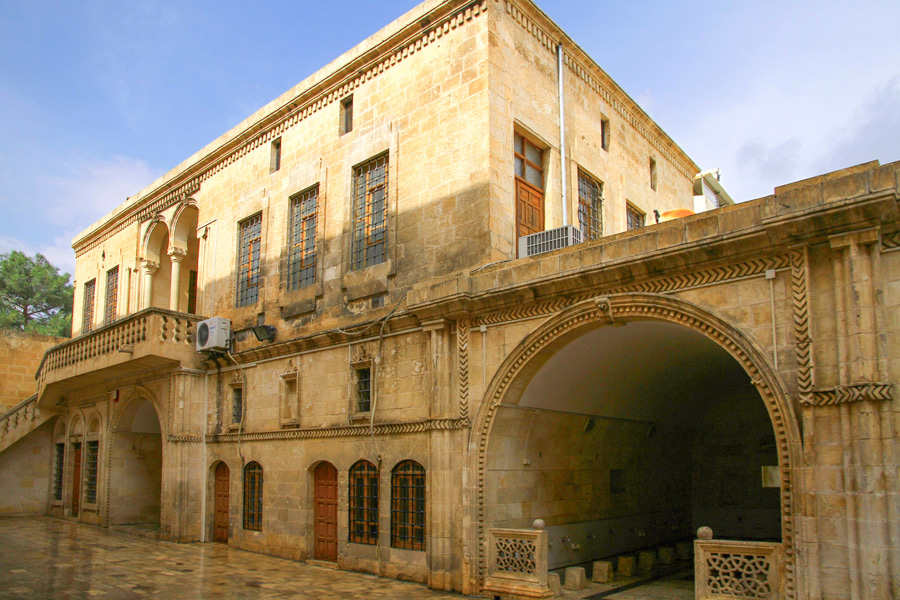
Walk Through Layers of Faith and History on Vali Fuat Street
A seven-minute walk from the Fırfırlı Mosque on Vali Fuat Street brings travellers to the Selahaddin Eyyubi Mosque (Selahaddin Eyyubi Cami). With its blend of Christian and Islamic features, the mosque ranks high among the must-visit places in Şanlıurfa.
The original Church of St. John the Baptist was believed to have been built in the 5th century. In the 19th century, it was restored under the Saint Johannes Prodromos Addai Church and converted into a mosque in 1993.
Reji (Regie) Church
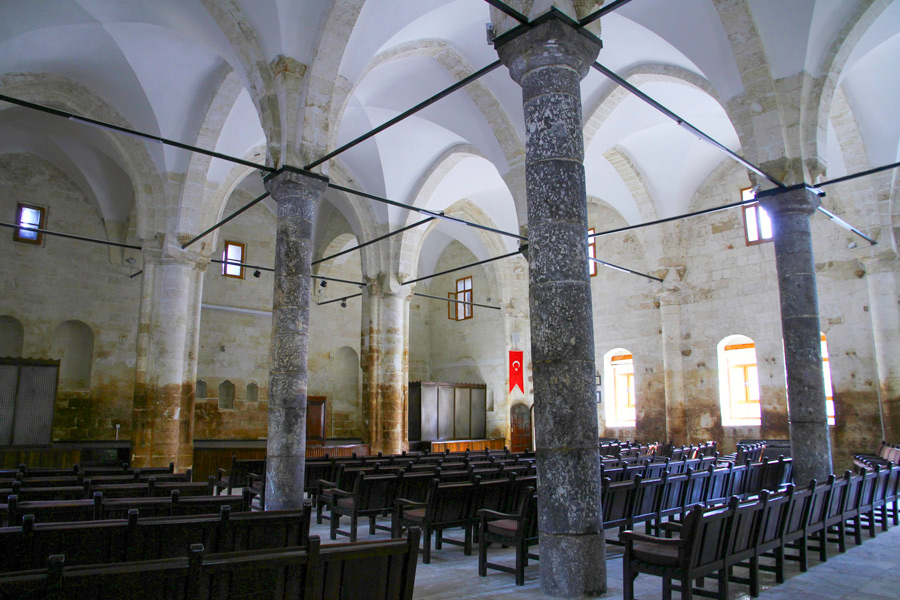
Witness the Revival of a Historic Assyrian Landmark
When it comes to Şanlıurfa landmarks, the Reji Church (Reji Kilisesi) deserves a place on every list of top things to do in Şanlıurfa. Known as St. Peter and St. Paul Church, it was erected in the second half of the 19th century on the ruins of the 6th century church. The Assyrian diaspora resided in that part of the city where this landmark is located. When they migrated to Aleppo (Syria), it was closed. Since 1998, it has been the cultural centre for various festivals and events.
Pro Tip: In 2026, Sanlurfa will host the UNESCO Music Cities Meeting with participants from about 80 countries. Coinciding your Şanlıurfa dates with the event will reward you with unforgettable memories.
Grand Mosque of Urfa
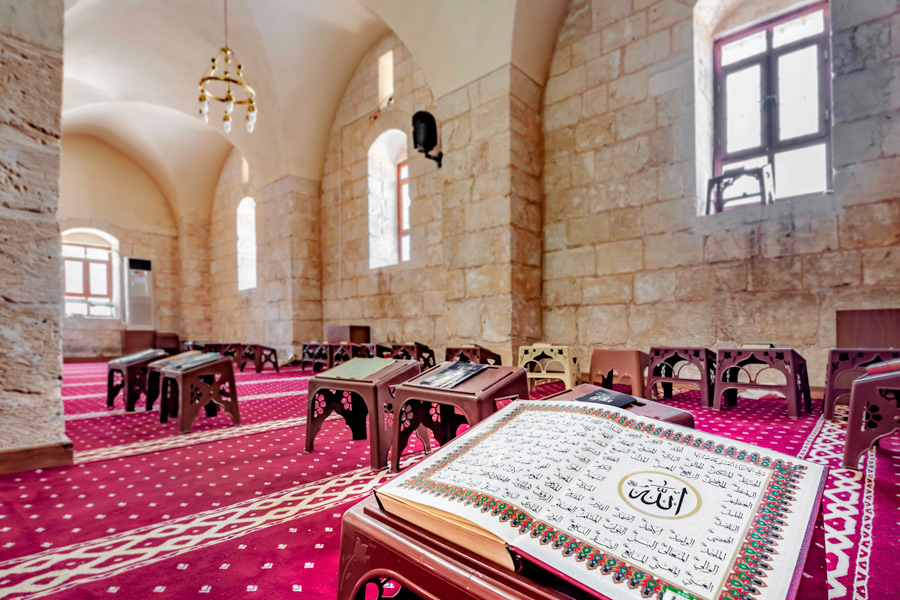
See the Bell Tower Converted into a Minaret
One more cultural landmark in Şanlıurfa with Christian roots is the Grand Mosque of Urfa, or Ulu Cami. The structure dates to the 12th century and possibly stands on the site of the earlier church. The Christian tradition has a few legends about a holy cloth called the Image of Edessa or the Medalion, believed to be the first holy “icon.” The well in the prayer hall predates the mosque and is said to be the hiding place of the Medalion.
İbrahim Tatlıses Müzik Müzesi
Unveil the Soul of Şanlıurfa’s Music Heritage
Ibrahim Tatlises Music Museum (İbrahim Tatlıses Müzik Müzesi) demonstrates the musical culture of the city with a profound connection to Anatolian music. It is housed in the historic Yasin Coffee House (Yasin'in Kahvesi).
Guests can find about the evolution of ancient Edessa to Islamic-era compositions. Exhibits contain photographs of performers who shaped Urfa’s sound and traditional instruments. Culture lovers searching for the must-visit Şanlıurfa landmarks will find them very instructive. The museum honours its namesake – singer İbrahim Tatlıses, an icon of Turkish folk music.
Pro Tip: Explanations are in Turkish, so hiring a local guide will help guests appreciate one of the distinctive Şanlıurfa historical sites.
Historic Streets of Şanlıurfa
Enjoy the Most Authentic Şanlıurfa Sights
The Historic Streets of Şanlıurfa (Tarihi Urfa Sokakları) are open day and night. Built from pale stone and sandstone whitewashed as in ancient times, they lend the city a distinct charm. These narrow, winding lanes often lead to cul-de-sacs, lined with quiet family homes that come alive when children play outside in the evenings.
Pro Tip: Unlike typical tourist quarters, this part of the old town has no cafés or restaurants – only the occasional boutique hotel where you can pause for a drink.
Sıra Gecesi
Join the Circle Where Music, Poetry, and Friendship Unite
Those looking for the best places to visit in Şanlıurfa at night for entertainment cannot miss Sıra Gecesi (Sıra Night). In fact, your Şanlıurfa travel will not be complete if you do not attend this cultural evening. Newcomers can witness the performance at the Urfa Guest House (Urfa Konuk Evi), listed on Google Maps as Urfa Sıra Gecesi.
Located in the Eyyübiye district on the historic Silk Road, this beautifully restored mansion highlights Seljuk-period architecture. As a UNESCO City of Music, Urfa keeps this tradition alive with live folk music, poetry, traditional food, and communal spirit.
Another highly prized venue for the Urfa cuisine and Sıra Night is Mandelion Hotel & Yeni Nesil Meyhane.
Pro Tip: Make reservations in advance because seats fill quickly, especially during weekends and festivals.
Göbeklitepe Gastronomy Centre
Taste Urfa’s Cuisine, Dish by Dish
A few Şanlıurfa attractions capture the city’s taste and spirit, such as Göbeklitepe Gastronomy Centre (Göbeklitepe Gastronomi Merkezi). Located in the modern Karşıyaka neighbourhood, it serves local dishes, from kebabs and stews to desserts and traditional drinks such as mırra and liquorice sherbet. Run by the city municipality, the centre also trains young chefs in authentic cooking techniques.
Harran
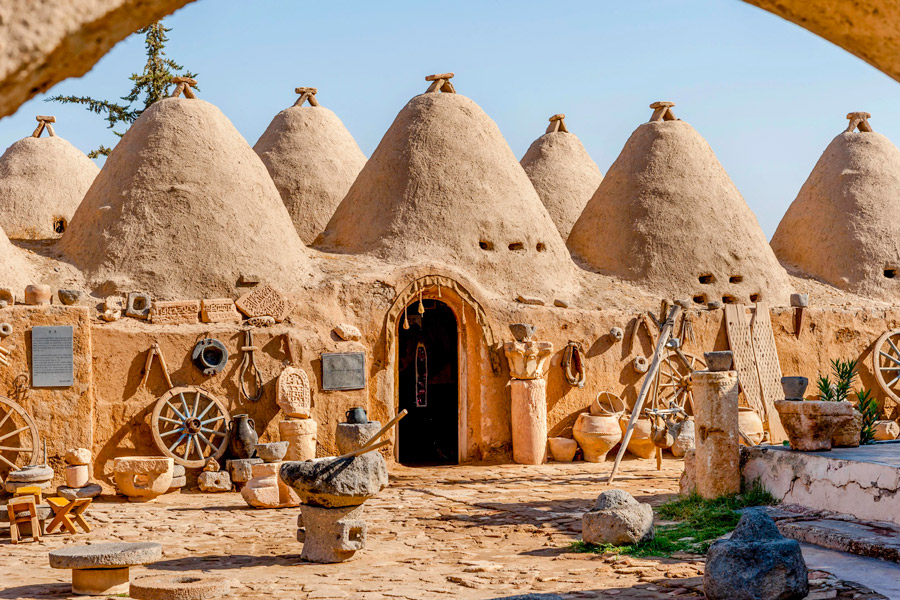
Step Into a Desert City Where Faith and Science Once Met
What to see in Şanlıurfa extends beyond the city itself. A 45-minute drive leads to Harran, a top destination for day trips from Şanlıurfa. The city is famous for its postcard beehive houses (Sit Alanı) and is central to Şanlıurfa religious tourism.
According to the Old Testament, Abraham and his family stopped here on their way to Canaan. Harran also shaped the history of Islamic philosophy and science; visitors can still scrutinise the ruins of the Medieval Harran School (Harran University), once home to renowned scholars like al-Battani and Thābit ibn Qurra.
Halfeti
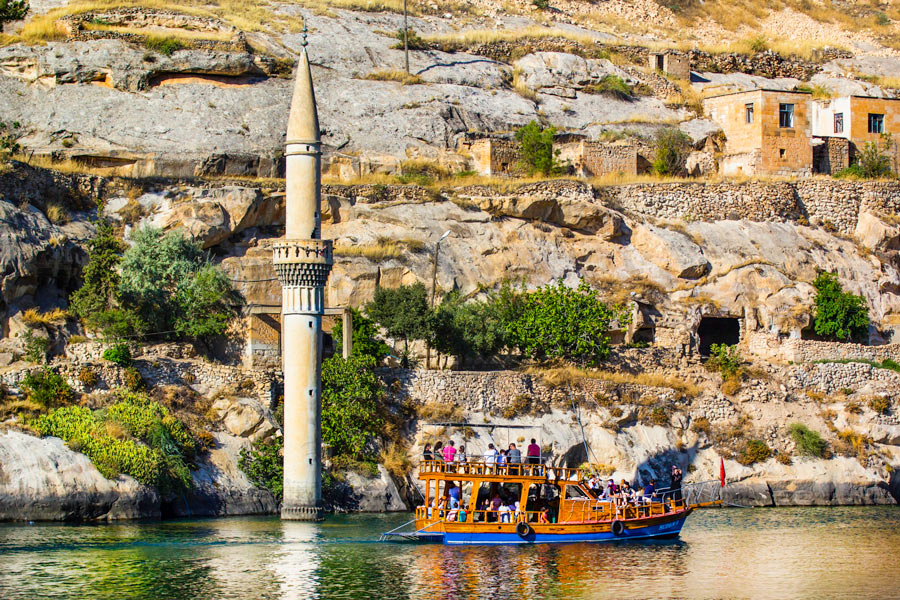
Cruise Through the Beauty of the Euphrates
There is a touch of mystery in many Şanlıurfa historical sites. Halfeti, just 1 hour and 30 minutes away (112 kilometres) from the city, is no exception. The old settlement, Savaşan, was submerged under the waters of the Birecik Dam in the 1990s. The residents had to move to the hilly Karaotlak neighbourhood, 7 kilometres from the town centre.
Popular activities in Halfeti and top things to do in Şanlıurfa Province include taking a boat tour on the Euphrates River and enjoying unique views. Another must-do activity is scuba diving at Savaşan Village. Sunken structures to spot are historic houses, narrow streets, caves, and the Medieval rock church.
Birecik
Watch Rare Birds and Hear the Riverside History on the Euphrates
On a day trip from Şanlıurfa to Halfeti, adding Birecik to your travel list is a rewarding part of Şanlıurfa sightseeing. The distance between the two towns is about 41 kilometres. Nature and fauna lovers will be excited to know that the region is home to rare birds – bald ibis. They can be observed at local breeding and observation stations. An impressive Birecik Castle (Birecik Kalesi) on the Euphrates River crowns a limestone hill, affording a marvellous panorama of the skyline.
Soğmatar
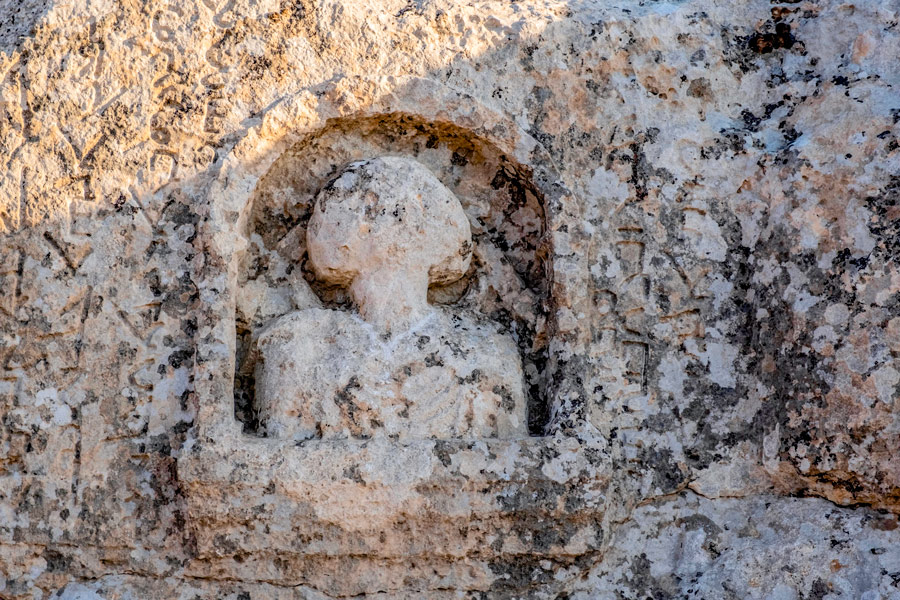
Trace the Beliefs that Shaped the Early Mesopotamian Faiths
Suppose you have toured all the Şanlıurfa landmarks in the city's heart and explored Harran. Now you may consider venturing to Soğmatar, tracking back to the 2nd century AD. This historic village is 67 kilometres from Şanliurfa and lures tourists with its rock-cut tombs and a cave dedicated to the moon god, Sin. Scholars believe it was a cult centre for worshipping the moon and the planet gods during the Osroene Kingdom.
Mount Nemrut
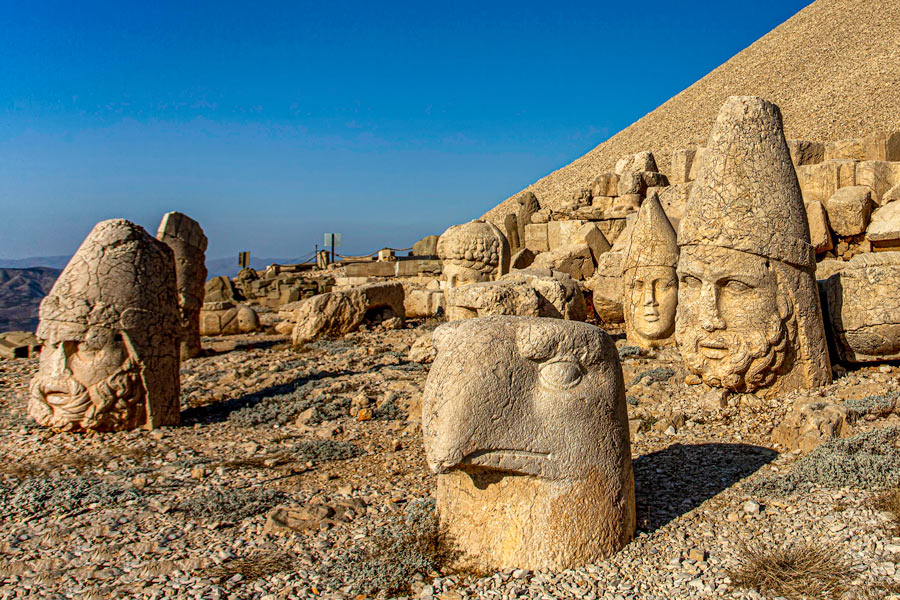
Where Stone Gods Greet the Sunrise
If your journey takes you to Sanliurfa, plan a trip to Mount Nemrut (Nemrut Dağı) in Adıyaman Province. It is one of the best places to visit in Southeastern Türkiye and a UNESCO World Heritage Site.
At an altitude of two thousand metres, the mountain summit is home to gigantic statues dating back to the 1st century BC. When you stand before them, it feels as though King Antiochus I Theos of Commagene wanted these gods to forever gaze upon sunrise and sunset. One could almost believe he succeeded. Many Şanlıurfa tours comprise Mount Nemrut, allowing travellers to experience its mystical and almost unreal atmosphere.
Pro Tip: From Adıyaman or Kahta, you can take a bus, rent a car to reach Mount Nemrut, or even book a helicopter transfer for captivating views from above.
Top Things to Do in Şanlıurfa in One Day
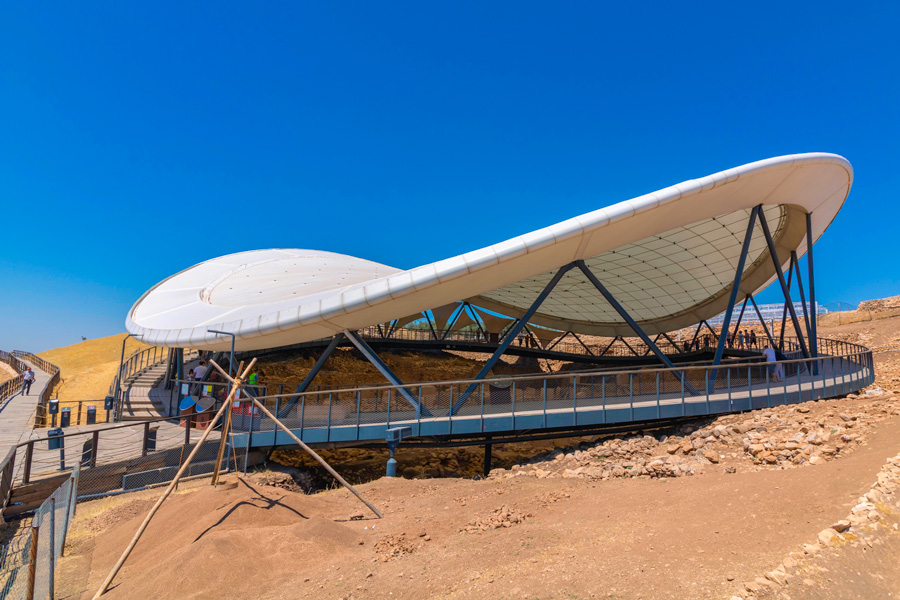
If you have only one day in Şanlıurfa, plan carefully to make the most of the city’s top things to do. This Şanlıurfa one-day itinerary encompasses Göbekli Tepe, the Şanlıurfa Archaeology and Mosaic Museums, Gümrük Han, Balıklıgöl, and Sıra Gecesi.
Morning: Göbekli Tepe (Approx. 2 hours)
Start early and take the bus from the stop next to the archaeology and mosaic museums to Göbekli Tepe, a must-visit Şanlıurfa attraction. If you stay longer than expected, refuel at Göbeklitepe Coffee, where visitors with a museum card enjoy discounts on coffee and snacks.
Late Morning to Early Afternoon: Archaeology and Mosaic Museums (1-2 hours)
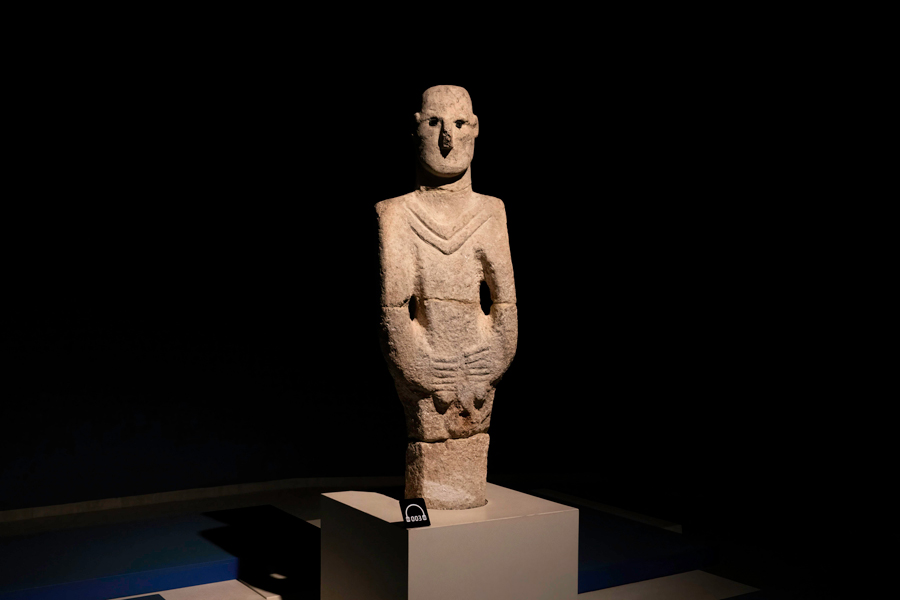
Return to the city centre to browse artefacts in the Archaeology and Mosaic Museums. The archaeology museum is home to the Urfa Man (Balıklıgöl statue) from the pre-pottery Neolithic period. Afterward, head to Astarte Restaurant for lunch, run by a Turkish chef from Şanlıurfa, Ali Keskin, with numerous national awards. Their menu boasts local and Anatolian cuisine.
Afternoon: Gümrük Han and the Historic Bazaar
Spend the afternoon at the historic bazaar, where you can bargain for scarves, copper knives, and other traditional crafts. In between shopping, take a break at Gümrük Han, the city’s signature caravanserai. Order menengiç kahvesi (pistachio coffee) and relish the oriental ambience – a must-do for everyone joining Şanlıurfa cultural tours.
Evening: Balıklıgöl and Sıra Gecesi
Walk to Balıklıgöl, the Pool of Sacred Fish. End your day at Urfa Konuk Evi, where you can take in a traditional Sıra Gecesi – an evening filled with Şanlıurfa local food, dance, and Anatolian music. This authentic performance is among the best evening activities in Şanlıurfa.
What to See in Sanliurfa in Two Days
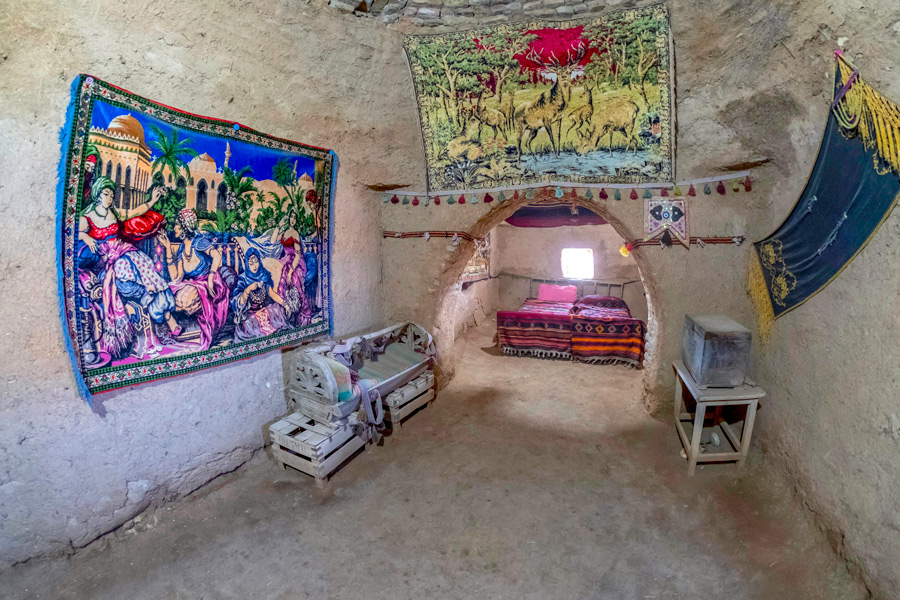
What are the top Şanlıurfa sights for two days? The best places to see in Şanlıurfa for the full 2 days or 48 hours are Şanlıurfa’s highlights and Harran.
Harran Sit Alanı (2 hours)
Begin with the Şanlıurfa historical sites in Harran. Deep biblical connections make this ancient city a unique destination for Şanlıurfa religious tours.
Hz. Yakup Kuyusu (1 hour)
Proceed to Jacob’s Well, a sacred site tied to Biblical and Islamic traditions.
Enjoy authentic regional dishes at Harran Gastronomy Centre, where every dish reflects the food culture of Şanlıurfa. Before returning to the city, have traditional kebabs, lentil soup, and fresh flatbread.
Balıklıgöl (1 hour)
No visit is complete without seeing Balıklıgöl.
Mevlid-i Halilurrahman Mağarası (1 hour)
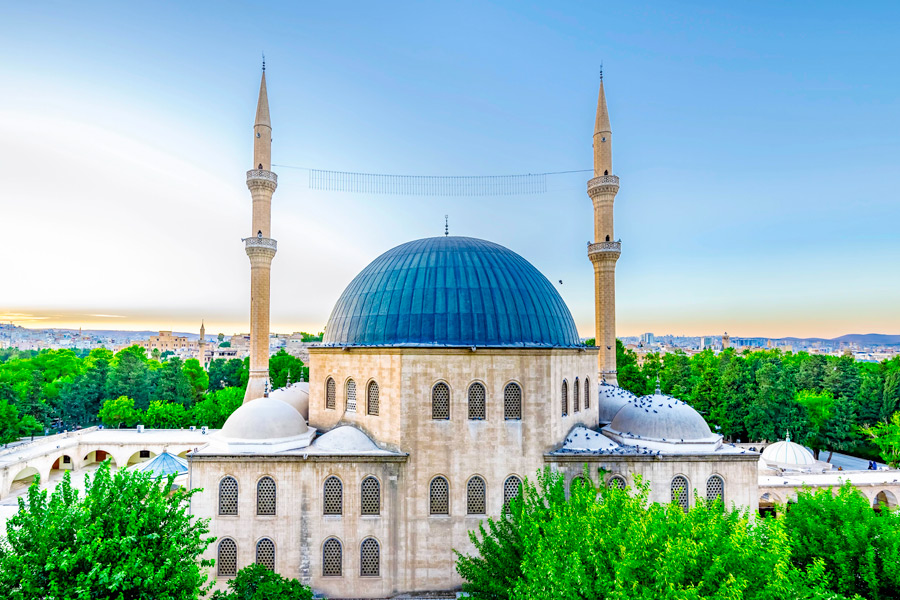
Just steps from Balıklıgöl is the Mevlid-i Halilurrahman Cave, traditionally believed to be the birthplace of Abraham.
End your day with a dinner around Balıklıgöl or head to the Göbeklitepe Gastronomy Centre in the Karşıyaka district for authentic Şanlıurfa cuisine.
Day 2: Göbekli Tepe and Museums
Continue your exploration of Urfa landmarks with a visit to the Şanlıurfa Archaeology and Mosaic Museums. Understanding various artefacts from Mesopotamian sites in Türkiye will prepare you for your trip to Göbekli Tepe. Spend a few hours uncovering the mysteries of T-shaped pillars and the ancient city before returning to the city for a final evening. Conclude your two days in Şanlıurfa with a traditional Sıra Gecesi that unites history, culture, and heartfelt Anatolian hospitality.
Top Things to Do in Şanlıurfa in Three Days
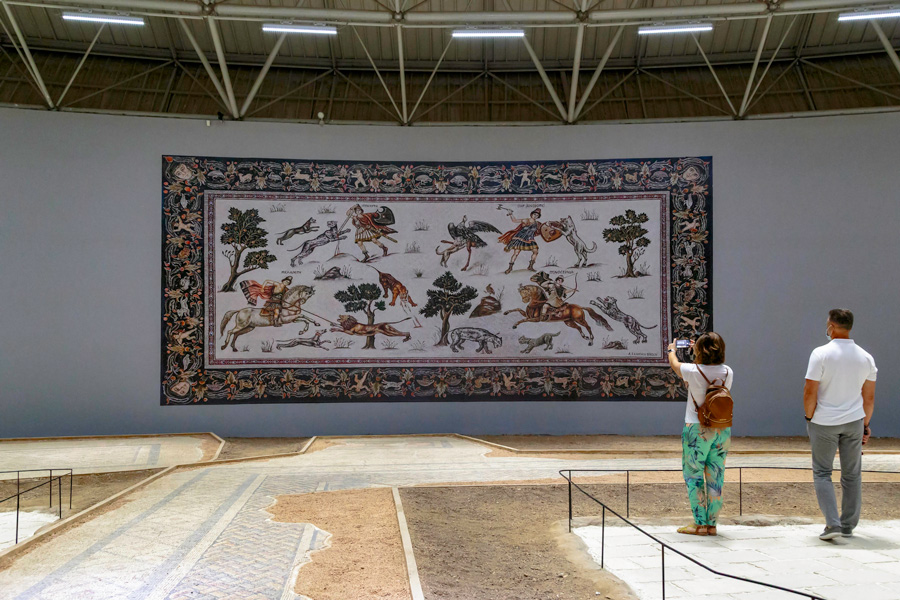
Travellers spending three days in Şanlıurfa can begin by following the two-day itinerary outlined above, which already involves the city’s essential Şanlıurfa attractions.
On the third day, leave Şanlıurfa to discover more of the region's wonders. It can be Soğmatar (53 kilometres), an ancient lunar sanctuary; Halfeti (112 kilometres), the sunken city on the Euphrates; or Mount Nemrut. Each of these destinations adds a distinct layer to Şanlıurfa sightseeing.
Alternatively, you may prefer to stay within the city and join Şanlıurfa cultural tours in our list of the best places to see in Şanlıurfa Province. However you choose to spend your time, the city’s rich history and warm hospitality promise a wonderful Şanlıurfa travel experience.
For more inspiration, see our complete Şanlıurfa Travel Guide.

